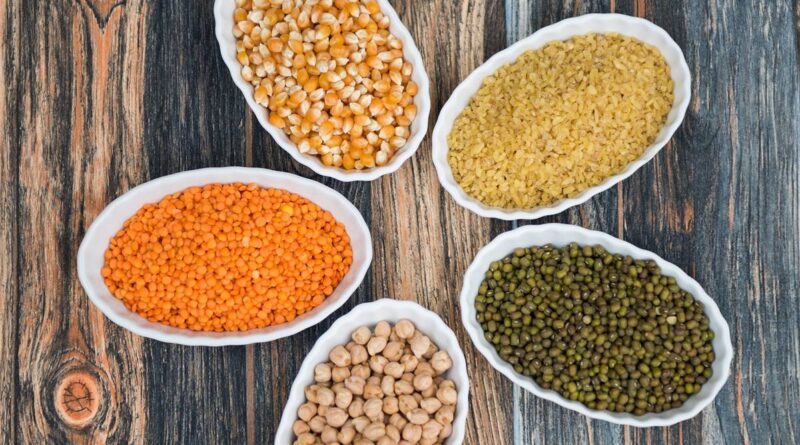Prices of pulses rule below MSP amid cheap imports
By Sandip Das
Surge in cheap imports from Myanmar, Mozambique, Tanzania and Canada and robust harvest prospects have dampened mandi prices of key pulses – tur, urad, masoor and chana. The prices are currently ruling below the minimum support price (MSP).
Trade sources told FE that mandi prices of imported urad and chana prices are currently ruling around MSP of Rs 7800/quintal and Rs 5650/quintal respectively.
However in case of tur, masoor and moong market prices of imported pulses prices are ruling 10% to 20% below the MSP of respective varieties.
Farmers may cut rabi sowing
This may, according to traders, discourage farmers from sowing chana and masoor in the forthcoming rabi or winter season if the prices continue to rule below the benchmark price.
Traders and processors have urged the government to impose import duties on yellow peas and other pulses varieties so that landed cost of pulses are not below MSP and farmers are encouraged to grow more pulses.
“The fall in prevailing mandi prices of most of the pulses varieties should be curbed through rising import duty so that farmers get remunerative prices and consider expanding area under pulses in the coming rabi season,” Satish Upadhyay, secretary, India Pulses and Grains Association, told FE.
Imports, buffer stock weigh on market
India has imported a record 7.34 MT of pulses in 2024-25. Currently duty free imports of yellow peas, tur and urad has been allowed till March 31, 2026, bengal gram and masoor has imported duty of 10% valid till end of FY26.
India imports about 15% to 18% of its annual pulses consumption mostly from Africa, Myanmar, Tanzania, Malawi, Mozambique, Canada, Russia and Australia.
The pulses productionin 2024-25 crop year (July-June) is estimated at 25.23 MT, 4% higher than the previou year.
The kharif sowing of pulses – tur, urad and moong this season so far has been 11.27 million hectare (Mha), a marginally higher than 1.34% compared to previou year. Tur area so far has declined marginally 4.39 Mha on year.
Overall cereal inflation in July eased further to 3.03% and had been in single digits for the past several months because of softening of rice prices due to bumper harvest and encouraging trend in kharif season sowing.
Inflation in pulses declined by 13.76% last month for six successive months on the prospects of robust harvest as well as adequate imports.
Inflation in pulses was as high as 113% in August,2024.
Sources said against the buffer norm of 3.5 MT, which the government needs to carry out a market intervention programme for curbing the possibility of rise in prices, the agencies – farmers’ Nafed and National Cooperative Consumers Federation – currently hold 2.48 MT of pulses.
Out of which a major chunk of stock is moong (0.90 MT), masur (0.64 MT) and tur (0.60 MT). Some of the masur stocks were created through imports.
The agriculture ministry is aiming to boost pulse production to 29.9 MT in the 2024-25 crop years (July-June), an increase of over 23% from 2023-24 crop year.
In 2019, the policy of maintaining a buffer stock of pulses was created aimed at controlling prices through market intervention programmme. The buffer stocks for pulses were created mostly through domestic procurement via price support scheme but also through imports using Price Stabilisation fund.
This article has been republished from The Financial Express.

